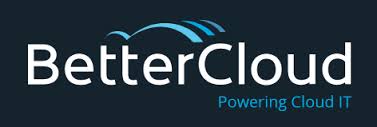Ensure Your Team is Working from Home Safely
(Published 4/21/20)
![]() The rush to get your employees setup and working from home is over; now is the time to take a step back and make sure your team is working effectively and that you are protecting your data and that of your customers.
The rush to get your employees setup and working from home is over; now is the time to take a step back and make sure your team is working effectively and that you are protecting your data and that of your customers.
Here is a simple checklist:
Give Employees Business Software
If you have MS Office licensed through an Office 365 subscription, you have the ability to install each user’s license on multiple computers and devices. Use this licensing to make sure your team does not run into version compatibility issues. If you have an Office 365 subscription, you can also ensure employees are logged into your domain/tenant and files are automatically backed up to OneDrive or SharePoint file systems.
Give Employees Endpoint Protection
If employees are using home computers for work, the non-work activity on that machine poses a malware and ransomware risk to your business. Even if your employee has a consumer antivirus tool in place, you should layer next-gen, advanced threat protection. Solutions like Webroot are designed to coexist with local protections. The solution also gives you control over the security footprint of machines accessing your systems and data.
Give Employees Web Filtering / DNS Protection
Between 20% and 35% of malware attacks originate from infected websites and DNS attacks. Adding web filtering/DNS protection allows your employees and their families to safely surf without putting your business at risk.
Properly Configure Desktop File Sync Utilities
Whether using Office 365 or G Suite, enabling a desktop sync tool gives your employees seamless access to your cloud-based files. Rather than syncing, configure the agent to serve as a mapping tool. Files cache locally while in use for performance; data remains securely in your cloud; users have easy and familiar access.
Put a Policy in Place
Make sure you have an appropriate policy in place, to protect your employees and your business. We are sharing a simple draft policy you can use and adapt to your needs.


 The cyber criminals behind ransomware see their efforts as a volume business. Charge too much, and victims will not pay. Targeting businesses and organizations in wealthier countries and in cities where people and businesses are most likely able to pay, the typical ransom is often about $500. More recently, we have heard of ransoms between 1 and 2 bitcoin (about US$600 to US$1300).
The cyber criminals behind ransomware see their efforts as a volume business. Charge too much, and victims will not pay. Targeting businesses and organizations in wealthier countries and in cities where people and businesses are most likely able to pay, the typical ransom is often about $500. More recently, we have heard of ransoms between 1 and 2 bitcoin (about US$600 to US$1300).



